Fiction
Soul of the Fire
Eliot Pattison (LAW’77)
Minotaur Books, 2014
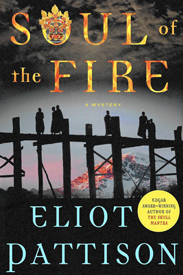 In his latest novel, Pattison delves into Tibet’s war-torn history. He draws on his extensive personal knowledge of the landscape, people, and political climate of Tibet, transporting readers to the land of Shangri-La, in all its beauty and turmoil.
In his latest novel, Pattison delves into Tibet’s war-torn history. He draws on his extensive personal knowledge of the landscape, people, and political climate of Tibet, transporting readers to the land of Shangri-La, in all its beauty and turmoil.
In Soul of the Fire, the eighth installment in the Inspector Shan series, the wary and observant protagonist, veteran detective, and Tibetan rights advocate Shan Tao Yun is faced with an ultimatum and the risk of losing those he loves most. He reluctantly accepts the title of “reformed criminal” and a seat on an international commission investigating a series of apparent suicides by self-immolation. However, he soon discovers the commission is a front for the Chinese government to cover up acts of protest by Tibetan monks, and he sets out to expose the government deception behind the suicides. Throughout the novel Shan is our translator between Chinese and Tibetans, East and West, past and present, illuminating the motivation behind this real-world conflict.
From the opening paragraph, Pattison immerses us in a world of sadness and persecution, but not without a subtle thread of hope. His use of metaphor and elegantly crafted “death poems” captures the emotional depth and humanity of his characters. “I never knew what it was to live,” reads one immolation poem, “until I started to die.”
The novel makes for dark reading at times, but its message is ultimately the power of loyalty, patriotism, spirituality, and righteousness. Shan is involved in a passionate and desperate political chess game, yet one where corrupt alliances disintegrate, and as Pattison writes, “hidden crimes find hidden justice.” Shan is not a catalyst, but a witness to the events as they unfold, asking the readers questions and offering subtle hints to the mystery’s resolution.
No religion on earth uses more signs than Tibetan Buddhism, the author writes, and with expert use of these symbols as well as Tibetan slang, he also offers a rich travelogue and cultural history. From the use of the color red (which represents both fire and joy in China) to references to Agni, the fire god, he combines traditional Buddhist legend with modern-day beliefs to tell Tibet’s, as well as Shan’s, story.
Like any detective novel, this one is laced with clues. But unlike the typical whodunit, the real story is not the resolution of the crime itself, but the strength and resilience of the Tibetan people, Pattison says in an author’s note. As for Tibet’s humanitarian struggle, he tells us there is no solution that does not require exceptional sacrifice.—Ashley M. Jones (CAS’15, COM’15)
The Sellout
Paul Beatty (CAS’84, GRS’87)
Farrar, Straus and Giroux
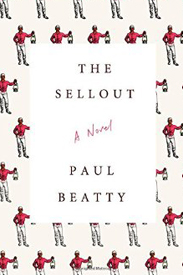 Reading this insane novel while the media wore out the video of a black South Carolina man being shot in the back by a cop was almost too much.
Reading this insane novel while the media wore out the video of a black South Carolina man being shot in the back by a cop was almost too much.
The narrator’s father dies a nearly identical death on a Los Angeles street corner (four shots, not eight), but instead of memorials and marches and federal investigations, what ensues is demented satire.
As the book opens, the narrator is sparking up some weed right in the Supreme Court chamber while waiting for the justices to take their seats, ruminating stoned on his race-case predecessors, among them the Scottsboro Boys and rapper Luke “Skyywalker” Campbell—as well as, for some reason, Al Gore. His case is a little different, though.
Despite being African American, he is accused of owning a slave and trying to resegregate his hometown of Dickens, Calif. And he is proudly guilty. It’s enough to get the court’s lone black member talking for once—an obscenity-studded exhortation to “get this hanging party started!”
And that’s just the prologue.
The rest of Beatty’s book recounts how things came to this dire pass. Dickens is a South L.A. ghetto (“Murder Capital of the World”) where the narrator grows fruits and marijuana of equally mind-blowing quality. The honest labor of agriculture seems like therapy for his strange-o childhood with his social scientist father, “founder and, to my knowledge, sole practitioner of the field of Liberation Psychology,” who uses his son as his primary experimental subject. Testing “the bystander effect,” for example, his father mugs him on a street corner. Bystanders jump in to help—help his father beat on him, that is.
When he learns as an adult that Dickens has been erased from existence as an embarrassment, with street signs removed and area maps redrawn, he works to bring it back as a segregated community.
In the process, he ends up owning a (volunteer) slave. Hominy Jenkins is the last surviving Little Rascal, hired as a Buckwheat stand-in turned minor player, “a sort of Little Rascals stunt coon…doused with all things white: sunny-side-up eggs, paint, pancake flour avalanches.” Now washed up and eagerly offering himself for—nay, demanding—subjugation, he’s searching for the lost reels he starred in, which happen to be the most racist of all.
There is much, much more, nearly all of it bust-a-gut funny until you realize what you’re laughing at. With Beatty’s encyclopedic references to pop culture and social history and his machine-gun comic sniping, any page you pick makes a Richard Pryor monologue seem like a slow, PG-rated nursery rhyme.
Almost none of it can be reprinted here. Readers allergic to profanity and the N-word will need their EpiPens. But here’s one little set piece:
My crash course in childhood development ended two years later, when Dad tried to replicate Drs. Kenneth and Mamie Clark’s study of color consciousness in black children using white and black dolls….Dollscape I featured Ken and Malibu Barbie dressed in matching bathing suits, appropriately snorkeled and goggled, cooling by the Dream House pool. In Dollscape II, Martin Luther King, Jr., Malcolm X, Harriet Tubman, and a brown-skinned, egg-shaped Weeble toy were running (and wobbling) through a swampy thicket from a pack of plastic German shepherds leading an armed lynch party comprised of my G.I. Joes hooded in Ku Klux Klan sheets. ‘What’s that?’ I asked, pointing to a small white Christmas ornament that spun slowly over the bog, glittering and sparkling like a disco ball in the afternoon sun. ‘That’s the North Star. They’re running toward the North Star. Toward freedom.’
But just when he has the reader appropriately snorkeled and goggled, Beatty lets us see past the brilliant, relentless riffing to the narrator’s (and the novel’s) clenched heart. Race is such an intractable issue in America, endlessly complicated, bloody, and absurd, that it can obscure even the narrator’s grip on his own humanity. As his plans come to fruition, it seems that the overriding issues he faces are two that his father once suggested a deranged crackhead consider to avoid police bullets. “I said, ‘Brother, you have to ask yourself two questions, Who am I? And how may I become myself?’”—Joel Brown
West of Sunset
Stewart O’Nan (ENG’83)
Viking
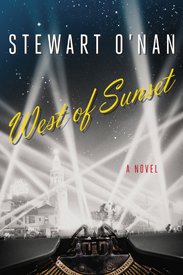 It’s hard to imagine today, but when novelist F. Scott Fitzgerald died of a heart attack in 1940, at age 44, he had already been largely forgotten. It had been 15 years since he had published The Great Gatsby (a novel that wouldn’t achieve real acclaim until after his death). And after Gatsby, he completed only one other novel: Tender Is the Night in 1934. Once an icon of the Jazz Age, Fitzgerald and his equally famous wife, Zelda, had been sidelined by alcoholism (his) and mental illness (hers) by the 1930s.
It’s hard to imagine today, but when novelist F. Scott Fitzgerald died of a heart attack in 1940, at age 44, he had already been largely forgotten. It had been 15 years since he had published The Great Gatsby (a novel that wouldn’t achieve real acclaim until after his death). And after Gatsby, he completed only one other novel: Tender Is the Night in 1934. Once an icon of the Jazz Age, Fitzgerald and his equally famous wife, Zelda, had been sidelined by alcoholism (his) and mental illness (hers) by the 1930s.
Desperate for money, he arrived alone in Hollywood in 1937 to begin a six-month contract as a screenwriter at MGM Studios for what was then the princely sum of $1,000 a week. He would spend the rest of his life there, churning out scripts, often lasting only a matter of weeks on a film project before it was canned or he was fired, all the while working on what would be his final, uncompleted novel, The Last Tycoon.
Those last three years of Fitzgerald’s life are the subject of O’Nan’s haunting and elegiac new book, West of Sunset. As the novel opens, the writer has left behind his wife, Zelda, who has been hospitalized in a sanatorium, and his daughter, Scottie, ensconced at a private boarding school on the East Coast.
O’Nan movingly describes Fitzgerald’s arrival in Los Angeles. Where once he had entered the city triumphant, he arrives now unrecognized. “As he stepped down onto the platform, there was no one to greet him. He gathered his bag, flagged a cab, and disappeared into traffic.”
Fitzgerald suffers one indignity after another in Hollywood, largely at the hands of heartless movie executives. At one point, having lost yet another screenwriting gig, his income exhausted, he is delighted to receive a royalty check from Scribner’s, only to discover that it’s for $1.43. Despite all these slights, however, O’Nan never lets his imagined Fitzgerald lose his dignity. Even as he nearly drinks himself to death, he remains a supremely gifted writer and a shrewd observer of human behavior.
Drawn largely from actual events, O’Nan’s portrait of the Hollywood studio system on the eve of World War II comes across vividly. Plenty of famous names pop up—Humphrey Bogart, Marlene Dietrich, Ernest Hemingway. Characters toss off the kind of witty bon mots and crackling rejoinders that peppered the best of the era’s films—in fact, much of the dialogue reads like something out of a Preston Sturges movie. After Fitzgerald informs his old friend and fellow screenwriter Dorothy Parker that he’s about to work on a film titled Infidelity, starring Joan Crawford, she replies: “Sounds like typecasting to me,” adding, “She’s slept with everyone at Metro except Lassie.”
A mesmerizing picture of Hollywood in its heyday emerges. The novel memorably re-creates the time Fitzgerald was hired as the ninth writer to work on the screenplay for David O. Selznick’s epic Gone with the Wind. Having summoned Fitzgerald and his secretary into his office for a story conference, the director begins reading the dialogue out loud in his Yiddish-tinged Pittsburgh accent while chomping on a cigar, O’Nan writes, “so that Suellen and Melanie and Prissie all sounded like two-bit fight promoters.”
But O’Nan saves his keenest powers of observation for the three women who laid claim to Fitzgerald in his final years: Zelda, Scottie, and Sheilah Graham, the English-born gossip columnist who fell in love with him shortly after he arrived in Hollywood and in whose arms he died. Graham is smart, ambitious, a savvy social climber. “Like everyone in Hollywood, she wasn’t who she claimed to be,” O’Nan writes. Born Lily Shiel and raised in abject poverty in London, Graham changed her name after landing a part in a stage revue before she became a writer. Despite her talent for reinvention, she remains supportive of Fitzgerald, even as his alcoholism deepens.
The novel’s most vivid scenes belong to Zelda, however, who haunts O’Nan’s pages like a spectral presence. When she first appears, she is just shy of 37, but the madcap Southern belle of her youth has been replaced by a woman in ill-fitting, cast-off clothes, looking “pinched and haggard, crone-like, her smile ruined by a broken tooth.”
There is a delicate poignancy to the scenes between Scott and Zelda. Even though he has begun his affair with Graham, Fitzgerald remains bound to his wife. At one point, during an outing, he reflects how “in another age, they’d been famous for their fashionable trespasses, the stuff of magazine covers and scandal sheets,” but now, what binds him to her is a nostalgic feeling of guilt that, “impossible as it was, he should have saved her.”
West of Sunset is an indelibly imagined portrait of a brilliant mind caught in the throes of an escalating death spiral. The reader can’t help but admire the man who, having suffered so much and lost so much, remains determined to find salvation in the act of writing.—John O’Rourke
Nonfiction
Black Broadway: African Americans on the Great White Way
Stewart F. Lane (CFA’73)
Square One Publishers
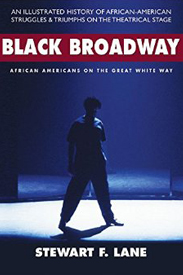 Broadway producers Lane and his wife, Bonnie Comley, have won nine Tony Awards between them for shows including the recent A Gentleman’s Guide to Love & Murder. The couple has also generously supported Boston University’s College of Fine Arts, becoming $1 million-plus lifetime donors with their eponymous Musical Theatre Fund in 2014.
Broadway producers Lane and his wife, Bonnie Comley, have won nine Tony Awards between them for shows including the recent A Gentleman’s Guide to Love & Murder. The couple has also generously supported Boston University’s College of Fine Arts, becoming $1 million-plus lifetime donors with their eponymous Musical Theatre Fund in 2014.
Now Lane is making a different kind of contribution to American theater as the author of Black Broadway.
The lavishly illustrated, 275-page coffee table book, his fourth, offers a broad look at the compelling story of black theater across a vast swath of our country’s history, from a production of Richard III just off Broadway in 1821 to the late 20th-century triumphs of figures like playwright August Wilson (Hon.’96) and current performer Audra McDonald.
That 19th-century Richard III was the debut production of the African Grove Theatre, at the corner of Bleecker and Mercer Streets in Greenwich Village, founded by a free black man and ship’s steward named William Alexander Brown in an attempt to fill the vacuum of entertainment venues that African Americans could then attend. He even reserved a section of the theater to accommodate white audiences, but rowdy behavior by whites, who harassed the performers onstage, led to repeated police raids that caused the theater to move several times and finally shut down. Lane tells the story in just a few pages, filling in the picture with a sidebar on the African Grove’s principal actors, rare photos and etchings, and even a playbill from Richard III.
From there, Lane leads the reader through decades of performances painful to contemplate now. Minstrel shows starring white men in blackface delivered crude and raucous stereotypes. Eventually black performers such as dancer William Henry Lane were able to crack the vaudeville stage.
Change, such as the Provincetown Players’ move to Greenwich Village with a production of Eugene O’Neill’s The Emperor Jones, came in the early to mid 20th century. When the production moved uptown, it made Charles Gilpin the first African American actor to star in a legitimate Broadway play.
About a third of the way through, the book enters what will be familiar territory for most theater fans, with 1930s shows like Native Son and Porgy and Bess and such performers as Ethel Waters and Pearl Bailey. By the 1950s and ’60s, A Raisin in the Sun and The Great White Hope, now classics, pushed racial issues into the mainstream of Broadway entertainment, while actors such as Harry Belafonte and Sidney Poitier were on the front lines of social change. Then it’s on to Ain’t Misbehavin’ and Dreamgirls, and today’s vastly improved though by no means racially balanced Broadway scene.
Along the way, Lane expands on the importance of black backstage figures little known to audiences, among them directors George C. Wolfe and Lloyd Richards, and developments such as “nontraditional casting” across race.
Black Broadway is not intended to offer great scholarly depth in any one aspect of the story, presenting instead a broad survey of the topic that’s unlikely to spark controversy. It’s a useful primer on a history of enormous challenge and enormous achievement. And for many it will be an introduction to lesser-known figures key to the early struggles of African American theater.
In the preface, Lane says he hopes the book will introduce readers to the history that will enable them “to see how we arrived where we are today.”—JB
Savage Park: A Meditation of Play, Space, and Risk for Americans Who Are Nervous, Distracted, and Afraid to Die
Amy Fusselman (GRS’88)
Houghton Mifflin Harcourt
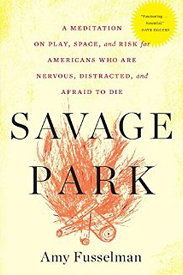 The notion of fatalism as a subtext in playground design would confound most Americans, who closely monitor their toddler charges as they swing, climb, and sink into sand in fenced-off areas that look essentially the same from Manhattan to Monterey.
The notion of fatalism as a subtext in playground design would confound most Americans, who closely monitor their toddler charges as they swing, climb, and sink into sand in fenced-off areas that look essentially the same from Manhattan to Monterey.
In her slender, provocative book, Fusselman uses a Tokyo children’s park as the focal point of her musings on the nature of play, on our sometimes misguided obsession with safety, and what it means, for adults as well as children, to be truly alive.
“Play is not something we do,” she writes. “Play is something we are.”
Fusselman, a New York City mother of two sons, and her family are invited to visit friends in Tokyo, where the writer experiences a series of epiphanies about humans’ relationship with spaces, public and private, as they spend time in playgrounds with names like Junk Park or pop-up play areas fashioned from detritus.
All of what she calls our “cardinal perspectives—that space does not exist; that it exists as a safe and nurturing atmosphere; that it is frustratingly in the way; that it is a hole into which we will one day disappear—are driven, ultimately, by our fear and denial of this fundamental, sacred relationship to space,” Fusselman writes. “It should not be surprising, then, that it is largely fear and denial of space that we communicate to our children.”
Fusselman grows especially captivated by Tokyo’s Hanegi Playpark, a work in flux where children have access to real tools and random materials to modify and augment the creaky homemade structures they play on. The park has spotless bathrooms and its wild, random feel is that way not by default, but by design, so much so that the place employs full-time “play workers.”
Back in New York, she is consumed by the cultural divide over the meaning and soul of play, and she returns to Japan on a mission, to shadow head play worker Noriko for a week.
If this initially strikes the reader as too brief a time to research the main thread of a nonfiction book, we are soon chastened by Fusselman’s rich, telling observations in a string of seemingly endless days and nights (Noriko has play worker meetings, and she must write daily reports) as, for Fusselman, creeping, nearly incapacitating exhaustion sets in.
Her elegant, thoughtful prose not only plants us in the dirt with the gleeful children, it inspires us to rethink our boundaries and assumptions as adults and seek to recalibrate the extent to which we temper discovery with caution. The American way—“bulldozing a space, padding and disinfecting it, and then congratulating ourselves on how we can sit back with our handhelds and leave our babies and children alone to ‘explore’”—takes an ultimate toll in its failure to teach children “how to take risks in space,” which, Fusselman argues, makes them less safe, not more.
Laced with enlightening quotes from cultural observers, Savage Park is also illustrated throughout with black-and-white snapshots of children at Hanegi, although with Fusselman’s acute eye for detail the text alone would have sufficed. Reminiscent of the unclassifiable, rich ruminations of Alain de Botton (The Art of Travel) and Geoff Dyer (Yoga for People Who Can’t Be Bothered to Do It), Fusselman’s book, slight as it is, carries welcome intellectual weight. She urges Americans to make peace with the unknown and to stifle the urge to choreograph and troubleshoot our children at play.
“Americans, I beg you,” she writes. “Recognize! We are already in Savage Park!”—Susan Seligson

































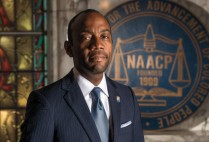
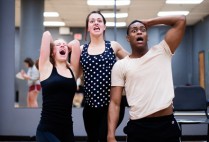
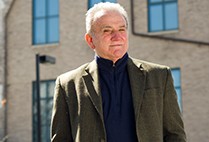









 In his latest novel,
In his latest novel,  Reading this insane novel while the media wore out the video of a black South Carolina man being shot in the back by a cop was almost too much.
Reading this insane novel while the media wore out the video of a black South Carolina man being shot in the back by a cop was almost too much. It’s hard to imagine today, but when novelist F. Scott Fitzgerald died of a heart attack in 1940, at age 44, he had already been largely forgotten. It had been 15 years since he had published The Great Gatsby (a novel that wouldn’t achieve real acclaim until after his death). And after Gatsby, he completed only one other novel: Tender Is the Night in 1934. Once an icon of the Jazz Age, Fitzgerald and his equally famous wife, Zelda, had been sidelined by alcoholism (his) and mental illness (hers) by the 1930s.
It’s hard to imagine today, but when novelist F. Scott Fitzgerald died of a heart attack in 1940, at age 44, he had already been largely forgotten. It had been 15 years since he had published The Great Gatsby (a novel that wouldn’t achieve real acclaim until after his death). And after Gatsby, he completed only one other novel: Tender Is the Night in 1934. Once an icon of the Jazz Age, Fitzgerald and his equally famous wife, Zelda, had been sidelined by alcoholism (his) and mental illness (hers) by the 1930s. Broadway producers
Broadway producers  The notion of fatalism as a subtext in playground design would confound most Americans, who closely monitor their toddler charges as they swing, climb, and sink into sand in fenced-off areas that look essentially the same from Manhattan to Monterey.
The notion of fatalism as a subtext in playground design would confound most Americans, who closely monitor their toddler charges as they swing, climb, and sink into sand in fenced-off areas that look essentially the same from Manhattan to Monterey.
Related Stories
Five Famous Alums: Writers
Pulitzer winners and best sellers
Man Booker Prize Goes to Alum Paul Beatty
BU alum the first American ever to win British award
2017: The Year in Alumni Books
A roundup of 15 great reads from BU authors
Post Your Comment